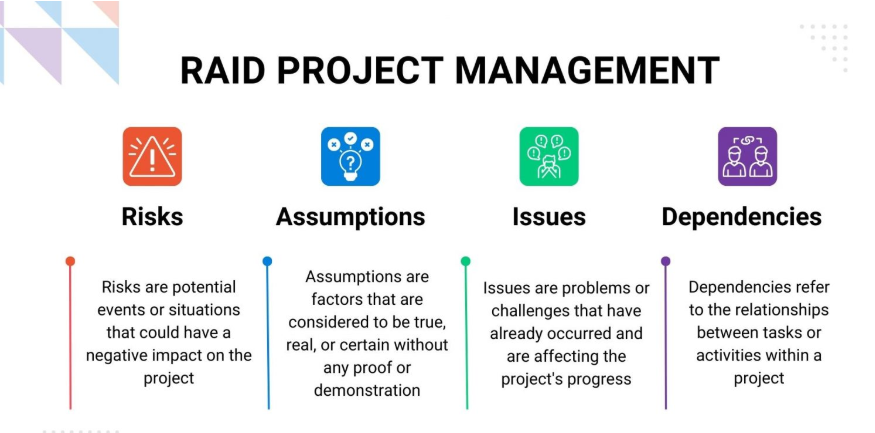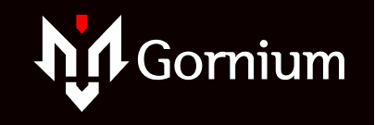Mastering Project Risks: How the RAID Framework Can Transform Your Projects
Discover how the RAID Framework transforms project management. Learn actionable tips for handling Risks, Assumptions, Issues, and Dependencies.
PROJECT MANAGEMENT
Nkem Idonor
2/10/20254 min read


In today’s fast-paced business environment, managing projects effectively means preparing for the unexpected. Whether you’re launching a new product, implementing new software, or leading a cross-functional initiative, uncertainties and obstacles can arise at any moment. Over the years, I’ve found that having a systematic approach to risk management is essential. One tool that has consistently helped me stay ahead of challenges is the RAID framework, an organized method for tracking Risks, Assumptions, Issues, and Dependencies.
In this article, I’ll break down each component of RAID, explain how to implement the framework and share practical tips to help you improve project outcomes. Let’s dive in.
Understanding the RAID Framework
1. Risks
Definition:
Risks are potential events or conditions that could negatively impact your project. They are uncertainties that, if they occur, may lead to delays, cost overruns, or reduced quality.
Why It Matters:
Identifying risks early allows you to plan mitigation strategies. The goal is not to eliminate every risk but to understand which ones have the potential to derail your project and to prepare responses in advance.
How to Manage Risks:
Early Identification: Begin with a brainstorming session with your team to list all possible risks. Look at past projects, industry benchmarks, and expert opinions.
Assessment: Rate each risk based on its likelihood and impact. A simple matrix categorizing them as high, medium, or low, can help prioritize your attention.
Mitigation Strategies: For high-priority risks, develop clear, actionable plans. This might include contingency plans, risk-sharing measures (like insurance or contractual clauses), or allocating additional resources.
Action Tip:
Start each project by dedicating time to your kickoff meeting to discuss potential risks. Use a collaborative tool or spreadsheet to capture and update these risks regularly.
2. Assumptions
Definition:
Assumptions are things you believe to be true during the planning phase. They often serve as the foundation for your project plan, but if they prove incorrect, they can cause significant disruptions.
Why It Matters:
Misunderstood or unchecked assumptions can lead to project misalignment. By documenting these assumptions, you make them visible to the entire team and create an opportunity to validate or challenge them.
How to Manage Assumptions:
Documentation: Record all assumptions made during the project planning phase.
Validation: Assign team members to verify these assumptions with data or through stakeholder consultations.
Adjustment: Be ready to pivot if new information contradicts your original assumptions. A periodic review can help ensure your project remains on track.
Action Tip:
Create a dedicated section in your project documentation for assumptions. Schedule regular reviews to update the team on any changes or confirmations.
3. Issues
Definition:
Issues are problems that are already occurring or have been identified during the project lifecycle. Unlike risks, which are potential future problems, issues require immediate attention.
Why It Matters:
Issues can disrupt the project if not resolved quickly. An efficient process to manage and resolve issues helps maintain project momentum and keeps stakeholders confident in their ability to deliver.
How to Manage Issues:
Immediate Logging: Use an issue tracker tool or a simple log where team members can report problems as soon as they are identified.
Prioritization: Evaluate issues based on their severity and impact on the project’s critical path.
Resolution Plan: Develop a clear plan for each issue, including who is responsible, a timeline for resolution, and any required resources.
Action Tip:
Hold a weekly “issue review” meeting where the team can update the status of current issues and discuss any new challenges. This ensures that no issue slips through the cracks.
4. Dependencies
Definition:
Dependencies are tasks, milestones, or external factors that your project relies on. These can be internal dependencies (other teams’ deliverables) or external (vendor delivery dates, regulatory approvals).
Why It Matters:
Dependencies are often the linchpins of your project timeline. A delay in critical dependency can have a cascading effect on subsequent tasks, jeopardizing the entire project schedule.
How to Manage Dependencies:
Mapping Dependencies: At the planning stage, list all dependencies and mark which ones are critical.
Communication: Regularly communicate with the owners of these dependencies to confirm timelines and anticipate any changes.
Backup Plans: Develop contingency strategies for critical dependencies. If a vendor delivery is delayed, have an alternative plan ready to mitigate the impact.
Action Tip:
Use project management software to visually map dependencies. A Gantt chart or dependency matrix can help you monitor and adjust plans as needed.
Integrating the RAID Framework Into Your Projects
Implementing the RAID framework isn’t a one-time exercise, it’s an ongoing process. Here’s a step-by-step guide to help you integrate RAID into your project management routine:
Kickoff Session:
Start with a dedicated session at the project kickoff to discuss Risks, Assumptions, Issues, and Dependencies. Involve your entire team to benefit from diverse perspectives.Documentation:
Create a comprehensive RAID log. This document should be easily accessible and updated regularly throughout the project lifecycle. Consider using cloud-based tools that allow real-time collaboration.Regular Reviews:
Schedule weekly or bi-weekly reviews dedicated to the RAID log. Use these meetings to assess new risks, validate assumptions, resolve issues, and monitor dependencies. Adjust your plans based on the latest information.Stakeholder Communication:
Keep your stakeholders informed by providing them with regular updates on the RAID log. Transparent communication builds trust and helps manage expectations.Post-Project Review:
Once the project concludes, conduct a retrospective analysis of your RAID process. What worked? What didn’t? Use these insights to refine your approach for future projects.
Real-World Application
Let me share a brief example from a recent project. We are developing a new software solution with a tight deadline. During our kickoff, we identified several risks, including potential delays from a key vendor, and made critical assumptions about market demand based on historical data. As the project progressed, an issue arose when the vendor encountered a supply problem. Thanks to our RAID log, we had already documented this risk and developed a contingency plan. We quickly activated an alternative vendor, adjusted our timeline, and maintained project momentum without sacrificing quality.
This experience underscored the value of proactively managing risks and dependencies. By staying organized and continuously reviewing our RAID log, we not only navigated the challenge but also learned valuable lessons for future projects.
Conclusion
The RAID framework is more than just a checklist, it’s a mindset that encourages proactive planning, team collaboration, and agile project management. By identifying and categorizing risks, assumptions, issues, and dependencies early on, you set the stage for smoother project execution and better outcomes.
If you find these insights helpful, I encourage you to implement the RAID framework in your next project. For more detailed strategies and actionable tips on project management, explore additional resources on our blog.


Stay in touch
© All rights reserved 2024, Gornium Inc.
